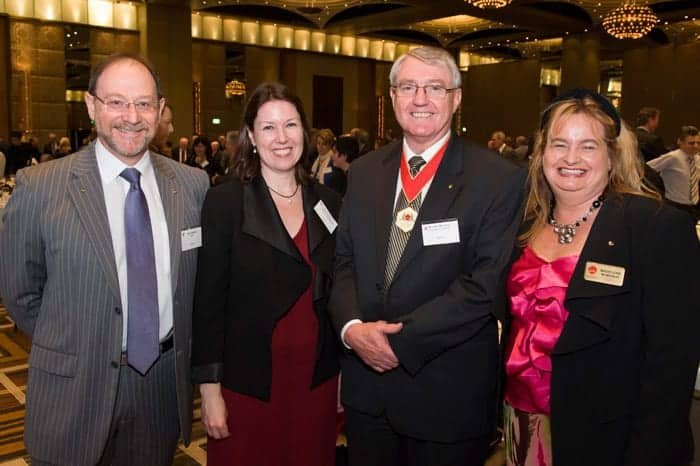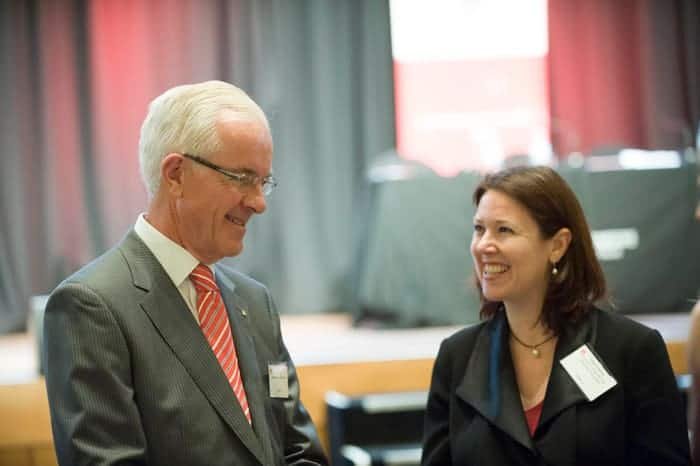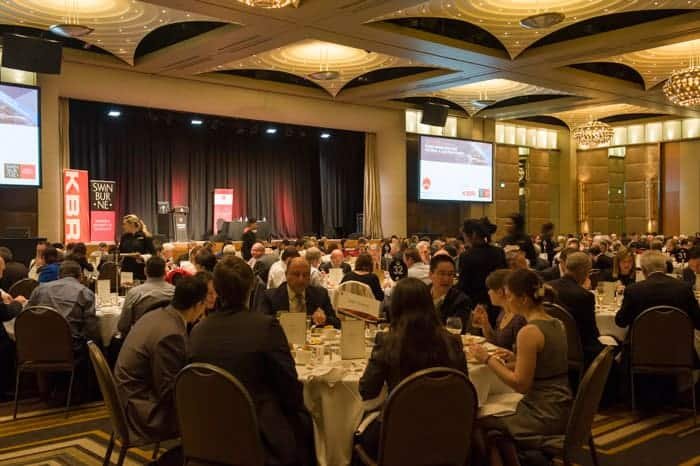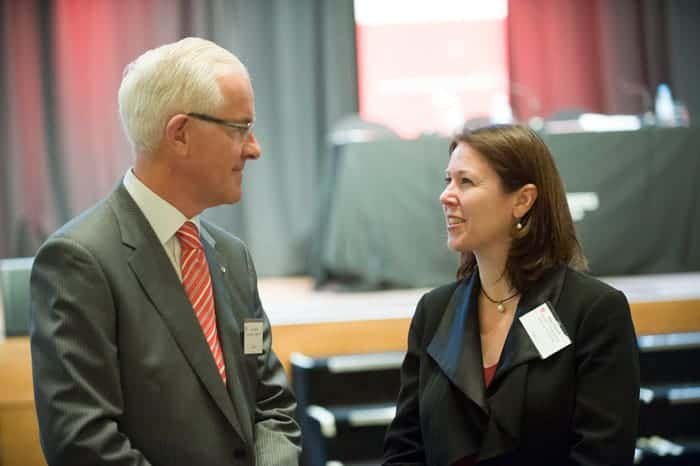Update on Victoria’s Energy Safety Framework Review
On 19 January 2017, the Minister for Energy, Environment and Climate Change announced an independent review of Victoria’s Electricity Network Safety Framework, to be chaired by Dr Paul Grimes. On 5 May 2017, the Minister announced an expansion to the Review's Terms of Reference to include Victoria’s gas network safety framework.The interim report was released in October and can be viewed at: https://engage.vic.gov.au/application/files/6915/0942/0613/Interim_Report_-_Review_of_Victorias_Electricity_and_Gas_Network_Safety_Framework.pdfR2A provided submissions for both gas and electrical safety which have previously been blogged at:
- Gas Supplementary Issues Paper - Review of Victoria's Electricity and Gas Network Safety Framework
- Review of Victoria's Electricity and Gas Network Safety Framework
From R2A’s reading of the interim report, the primary recommendation is that there should be a single piece of energy safety legislation that covers electricity, gas and pipelines, all to be administered by a single agency, Energy Safe Victoria.Pleasingly, from R2A’s perspective, the decision making criteria for safety should be consistent with that of the 2004 OHS act, that is, a precautionary approach that uses the SFAIRP principle rather than an ALARP principle using target levels of risk.In coming to this view Dr Grimes comments favourably on the R2A understanding of issues involved. He notes that R2A in its submission to the Review expressed a view that there needs to be clarity and consistency around the question of what constitutes “ reasonably practicable ” and, in addition, the language that is adopted to express the objective of the safety framework.
Nevertheless, the methodological distinction between the target risk and a precaution based approaches, and the other important practical implications identified by R2A, are highly relevant to the Review’s consideration and have helped inform its assessment of leading practice. (footnote on page 72)
Dr Grimes concludes that:
The Review is persuaded by the arguments that a pure target risk approach, while having some theoretical elegance, is less robust in practice than a precaution - based approach…(page 73) … the Review is proposing a draft recommendation that this definition be formally adopted for electricity and gas network safety.
The R2A Board considers the adoption of the precaution based approach to be an outstanding outcome and congratulates Dr Grimes on his acuity.The cutoff date for comment on the interim report of the Review of Victoria’s Electricity and Gas Network Safety Framework is the 27th November.
‘Due Diligence’ continues to expand in legislation
The changes set in motion by the 2011 National Model Work Health and Safety legislation are becoming apparent. Designers, owners, operators, regulators and the Courts are beginning to come to terms with the WHS Act’s imposed duties for organisations’ officers to ‘exercise due diligence’ in their safety risk management processes.
Due diligence is also a concept in both environmental protection and the broader context of sustainability, one of a number of parallels with health and safety. It is closely linked to how we view environmental impacts as part of the Technological Wager. That is, “society … betting on the success of future innovations to bail us out of problems created by present innovations”, as recently expounded by Adam Briggle in ‘A Field Philosopher’s Guide to Fracking’. One’s willingness to accept longer odds will reduce what one considers diligent at the time of the wager. That is, if we’re more confident of dealing with the mess we make now in the future, we may accept fewer or less effective precautions against the mess in the first place.
The recent amendments to Queensland’s Environmental Protection Act introduced (inter alia) a ‘due diligence’ test which the Department of Environment and Heritage Protection can implement when determining if a party took all reasonable steps to comply with their environmental obligations under the Act. Madeline Smith of Herbet Smith Freehills notes that amongst other matters it raises a range of questions as to what constitutes reasonable due diligence for an investor, financier or parent company with respect to, for instance, a subsidiary or investment company’s environmental obligations.
We watch these developments with interest.
Risk Management Standard Squabble
An interesting article in the European Commercial Risk Europe titled "Hopkin calls for end to risk management standard squabble" discusses the squabble between the use of ISO 31000 and the COSO ERM Cube shown below.
COSO ERM Cube
Essentially the point being made is that the failure to adopt a single approach creates confusion and loss of traction in the market place.
From R2A’s perspective, this confusion was inevitable. The attempt to make market risk and safety risk operate under a single risk management approach was always a nonsense as has become increasingly obvious.
For example, the idea that ‘risk appetite’ can be applied to high consequence, low likelihood safety issues is simply irrational, and in breach of the model WHS legislation. This matter is being discussed in the paper being presented at the AMPI conference above. With regard to the pilotage of ships in and out of Sydney Harbour and Port Botany, the use of ISO 31000 is specifically rejected in favour of the precautionary approach required by the WHS legislation.
Event Invitation – 2013 Overview and Book Launch
We are very pleased to announce that after 15 years the R2A text is now in it's 9th edition. New chapters include the R2A Operations Due Diligence model as well as significant updates to the Work Health and Safety chapter and the Quantified Risk Assessment chapter.
Save the Date
To kick off 2013 and to celebrate the 9th edition text launch, R2A will be hosting a private event in Melbourne on Thursday, 7 February 2013 from 3pm to 5pm at Pop Restaurant (Upstairs), 68 Hardware Lane, Melbourne.
Richard Robinson will discuss what's new in the 9th edition text and overview the general state of affairs in industry. The short presentation followed by drinks and canapés.
Professor John Wilson from Swinburne University will also be in attendance as our special guest.
R2A clients and their colleagues are welcome to attend. It is a great opportunity to network and catch up with Industry colleagues.
All welcome.
2012 The Year in Review
It’s hard to believe that another year is coming to a close. As part of our end of year wrap up, here are some highlights that we would like to share with you.
In May, we welcomed Dr Peter Hurley as a Consulting Engineer to our team and would like to thank Peter for his contribution in 2012 and in particular his work on the Enterprise Due Diligence Review for Energy Safe Victoria and the 9th edition of the R2A text.
We were also privileged to work with many clients throughout the year. Here are some interesting projects completed in 2012.
Interesting Projects
Security of supply of the Victorian Transmission System (VTS) – A review with particular regard to the economic benefits to existing and long-term customers of the proposed Western Outer Ring Main (WORM) Project.
Plant safety and operations due diligence reviews, Veolia Environmental Services. A safety and business continuity review of one of Veolia’s plants to identify and establish critical items of plant and equipment.
Work Health & Safety Review, Maritime Safety Tasmania. A review of MAST activities to demonstrate due diligence as required under the Tasmanian Work Health & Safety Act. The results were documented as part of MAST’s Safety Management System.
Quality assurance framework, Office of the Chief Fire Officer. Development of a framework in which the Chief Fire Officer has confidence that his obligations during fire events have been diligently met.
Conferences
Richard presented at the following conferences in 2012 and has availability for similar opportunities in 2013. Drop Richard a line if you have an event coming up.
- Shutdown in Brisbane and Perth
- Energy Networks Association
Media
Richard had two articles published in 2012 -
- Engineering implications of the harmonised safety legislation (feature article in January edition of Engineers Australia)
- Managing bushfire risk of powerlines (April edition of Infrastructure Australia)
Marketing Activities
Our marketing program continued in 2012 with the following highlights –
Project Due Diligence white paper
Industry case studies for:
- Airspace collision risk modelling
- Tunnels
- Powerline bushfires
New client testimonials
This blog!
Education
From an Education perspective Richard delivered –
- Five public short courses Risk & Liability Management for EEA
- Seven in-house courses
- Swinburne post graduate course Introduction to Risk & Due Diligence.
We are looking forward to some new projects in 2013. Richard’s Engineering Due Diligence course is now also available for registrations, details here. All registered participants receive a copy of the new 9th edition of the R2A text valued at $265.
Expert Witness
At R2A, we are called upon from time to time to give expert witness statements. Recently, Richard was an expert witness for the Harbour Master at Marlborough District Council (New Zealand).
Richard was asked to provide evidence to the Board of Enquiry appointed under the Resource Management Act 1991 to consider The New Zealand King Salmon Co. Limited private plan change requests to the Marlborough Sounds Resource Management Plan and resource consent applications for marine farming at nine locations in the Marlborough Sounds.
Richard was retained on behalf of the Marlborough Sounds Harbour Master to provide expert evidence in regards to the navigational hazards associated with the proposed development.
Richard used a due diligence framework to assess two expert reports from the viewpoint of all users of the Marlborough Sounds.
The hearing concluded on Thursday 18 August 2012 and the Board are now working on the draft report and decision, which is expected before Christmas 2012.
Western Outer Ring Main Project
R2A completed a review of the security of supply of the Victorian Transmission System (VTS) in early 2012.
R2A were commissioned by the APA Group to complete a review of the security of supply of the Victorian Transmission System (VTS) with particular regard to the economic benefits to existing and long-term customers of the proposed Western Outer Ring Main (WORM) Project in Victoria for submission to the Australian Energy Regulator (AER), the national energy market regulator.
The report concludes that in the event of a supply failure as occurred at Longford in 1998, the WORM Project would:
- Provides major benefits in the shoulder seasons (spring and autumn) to all existing customers, and
- Substantially reduces a winter disruption particularly to domestic customers and essential services, if industrial and commercial loads are dropped off.
Additionally, the WORM Project is a vital element to support an augmentation of the supply transmission capacity to the Victorian gas market, facilitating long-term market expansion benefits.
For a 5, 10 and 15-day duration interruption over a 60 year pipeline life, this amounts to a potential avoidance of $46.0m, $77.7m and $105.8m respectively. Longer events such as that experienced in the last Longford explosion would result in significantly higher benefits.
For a WORM net project capital value of $39.4 m, this suggests the WORM Project achieves a payback over the 60-year pipeline life for any one event exceeding about 5 days.
Transparency in decision-making in complex technological enterprises is often difficult. Requests for greater system, plant or network reliability for essential services is often seen as ‘gold plating’ by financial markets and shareholders, and yet the failure to have sufficient redundancy can result in the catastrophic loss of shareholder funds and community devastation.
The R2A operational due diligence methodology provides decision makers from Board to Line Management with relevant information to make complex decisions.
Diversity Means Business
The Women in Engineering National Committee (WIE NC), working with large engineering employers, have developed a solutions based approach focusing on delivering better business outcomes to enable industry to evolve and successfully compete in a changing environment.
Many of our members work in organisations that have had singular success in recruiting, retaining and celebrating female engineers in their workforce.
As a response to numerous approaches from industry to provide advice and guidance on how to set up a successful in-house professional women’s program, the WIE NC undertook a project to develop an industry blueprint of successful in-house professional women’s programs.
A paper was developed following a round table discussion with industry partners, that have programs that successfully encourage gender diversity in an organisation through initiatives that attract, retain and celebrate women in the engineering profession.
The Women in Engineering National Committee (WIE NC), working with large engineering employers, have developed a solutions based approach focusing on delivering better business outcomes to enable industry to evolve and successfully compete in a changing environment.
Many of our members work in organisations that have had singular success in recruiting, retaining and celebrating female engineers in their workforce.
As a response to numerous approaches from industry to provide advice and guidance on how to set up a successful in-house professional women’s program, the WIE NC undertook a project to develop an industry blueprint of successful in-house professional women’s programs.
A paper was developed following a round table discussion with industry partners, that have programs that successfully encourage gender diversity in an organisation through initiatives that attract, retain and celebrate women in the engineering profession.
The paper looks at some of the issues to consider, key messages to achieve success and some lessons learnt when setting up an in-house professional women’s program. The full document is available on-line here.
The paper plays a vital role in achieving the Committee’s vision of a diverse, inclusive and sustainable engineering profession.
The program was officially launched at the Engineers Australia Fellows luncheon. Thanks to our industry partners Alcoa, Ford, IBM, NSW Transport RailCorp and Sinclair Knight Merz.
Photos from the launch shown below.

Left to right - Harry Roberts, Executive Manager Integrated Transport Solutions, Asia Pacific, KBR, Gaye Francis, John McIntosh, President, Engineers Australia Victoria Division and Madeleine McManus, National Councillor Engineers Australia

Tom Fricke, Executive Board Member Committee for Melbourne and Gaye Francis

Fellows Luncheon and Diversity Means Business launch

Tom Fricke, Executive Board Member Committee for Melbourne and Gaye Francis
